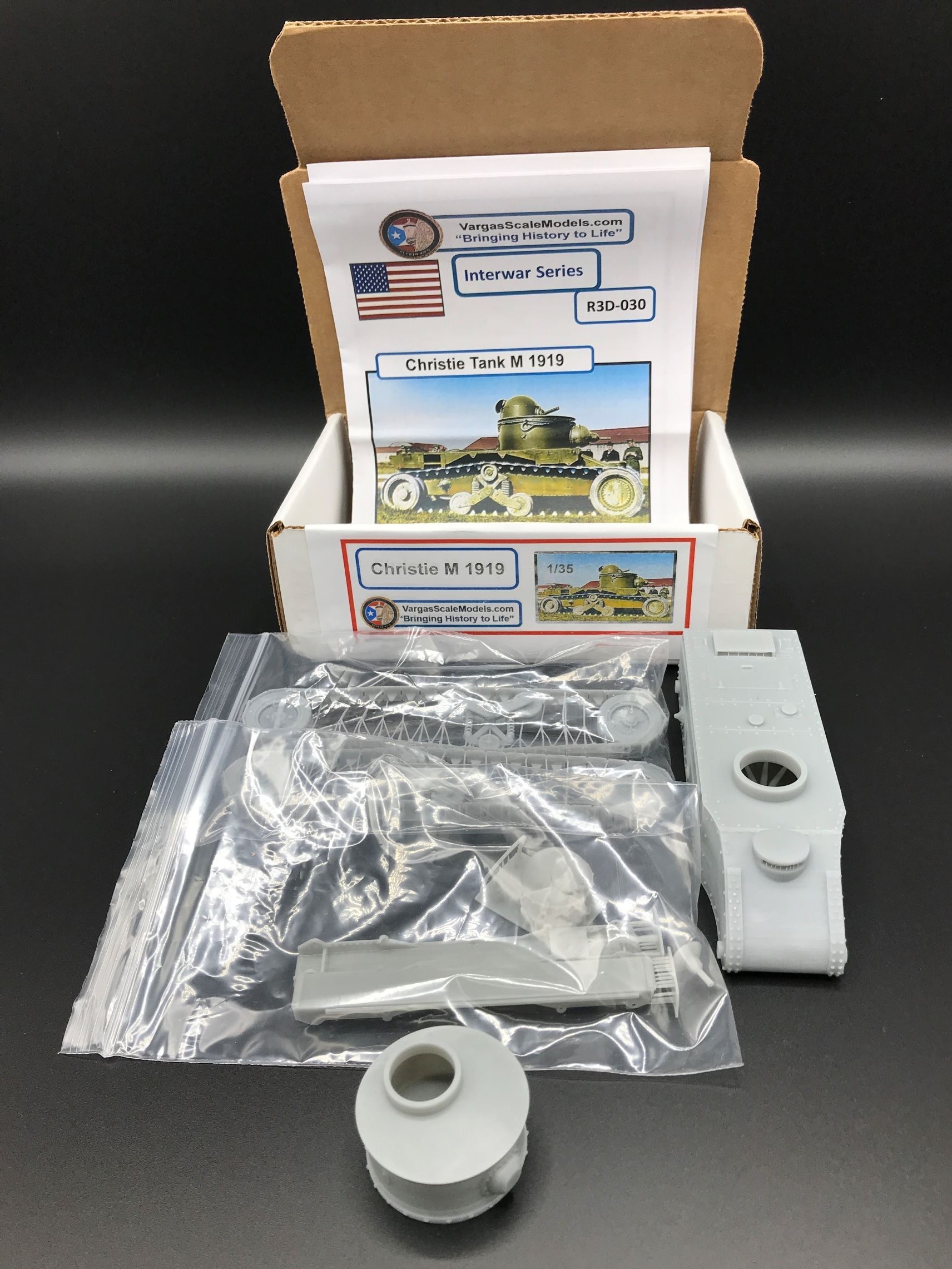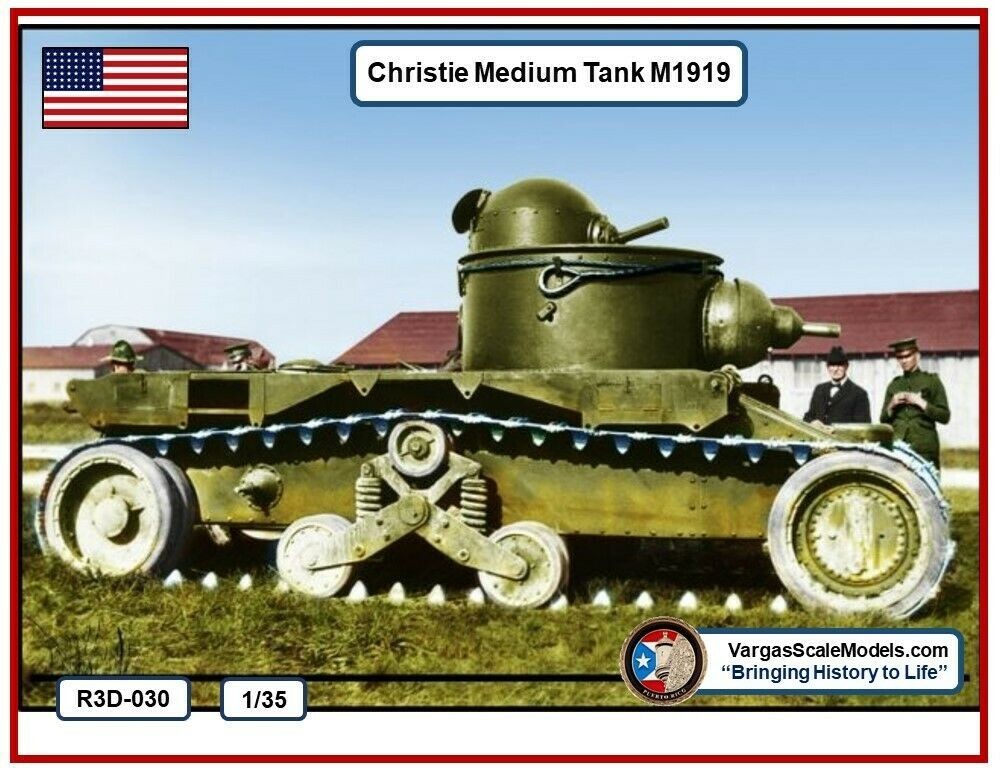Introduction
Walter Christie was a talented and experienced American engineer and auto racer. He submitted a design and working prototype of a revolutionary tank to the US Army in 1919 as part of the US Army’s quest for a modern, domestic tank to replace its WW1 French FT-17 light tanks and Mark VIII “International” heavy tanks. These tanks were slow, lumbering beasts. They were so unreliable that they were transported to the start point on trucks and required frequent overhauls. His design was a remarkable departure from existing designs and tried to solve these problems by running on wheels at speed on roads and switching to tracks for cross-county mobility. It could reach speeds of 7mph (11 km/h) cross county on its tracks, and 13mph (21 km/h) on its road wheels and was armed with a 6-pounder (57mm) gun, and a co-axial .30 caliber machine gun in a round turret. Testing revealed several problems and Christie requested that the evaluation be halted so that he could improve the design. This began a decade long cycle of innovation, prototypes, and conflict between Christie and the US Army.

Review
Vargas Scale Models from California USA specializes in interesting and unique subjects from World War One and the Interwar periods in 1:35th scale. All are CAD designs and 3D printed in resin.
The kit is packaged in a small stout corrugated cardboard flip top box. Inside are the instructions, and zip-lock bags with a whopping eleven 3D printed resin parts cushioned in bubble wrap. The instructions are one page double sided printed in color. They consist of photos to highlight the assembly. There is no parts list or painting instructions. Period photos of the prototype show it all dark, assumed to be olive drab, with no markings. No decals or PE are included or needed.


The parts are printed in a gray, brittle resin, so care is needed in working with it. The 3D printing process allows a surprising amount of detail to be represented on a single large part that might require dozens of parts if molded in styrene. The hull is printed as a single piece. The running gear and tracks are a single piece – no road wheels to clean or individual link tracks to labor over. The turret and cupola are four parts. The fenders and engine cover are very thin and delicate. The level of detail is good, and it is reasonably sharp. 3D printing allows things that are not possible with other production techniques like functional coil springs.

3D printing does introduce a couple of new steps in the build process. The parts require thorough cleaning with a toothbrush in hot soapy water followed by rinsing in warm water and blow drying with your airbrush. To ensure that the resin is fully cured, lay out the parts in direct sunlight for several minutes. Too long in the sunlight will cause the resin to get brittle. Some of the parts exhibit 3D print striations. Priming with a sandable, self-leveling automotive or hobby primer (like Mr. Surfacer 1200 in a rattle can) will fill many of these striations. The remaining striations are sanded out. Once the parts are cleaned up, the assembly is trivial. The instructions are minimal but adequate. Although the parts fit is good, dry fit everything before using CA glue to assemble. Once assembled, I use Mr. Surfacer 1500 Black rattle can primer to highlight any areas needing attention before proceeding to paint and weather as normal.
Conclusion
This is the only kit of this subject available in any scale or medium. The kit builds into an excellent replica out of the box. Due to the need for CA glue, it is more appropriate for experienced modelers. I highly recommend the kit and hope to see more new Great War and Interwar kits from Vargas. Vargas Scale Models offers their kits for sale on eBay at vargasscalemodels. Thanks to Vargas or providing the review kit.



























